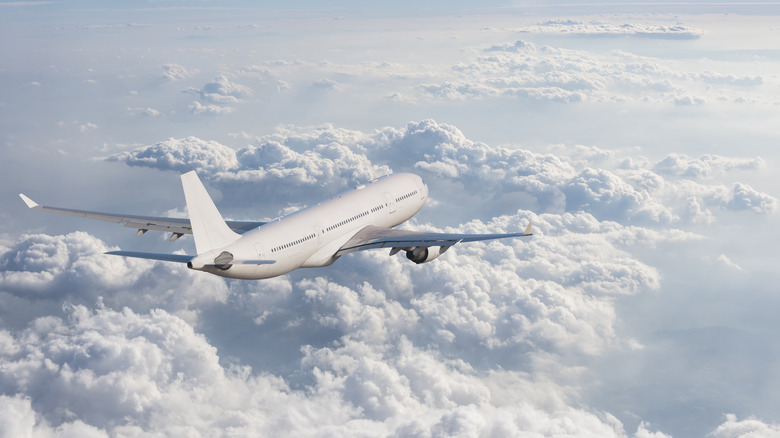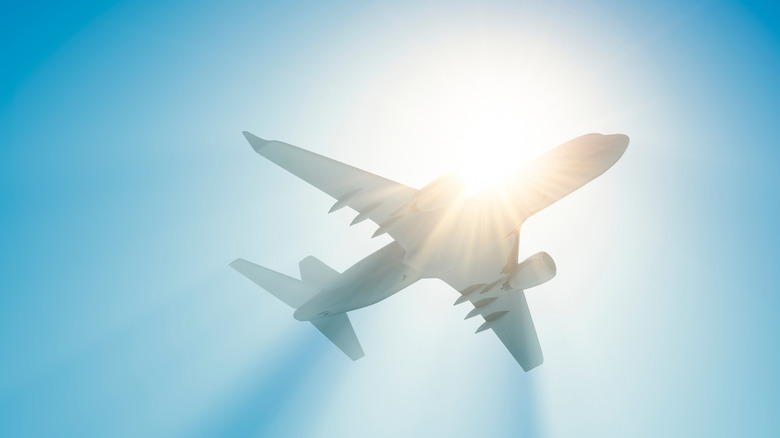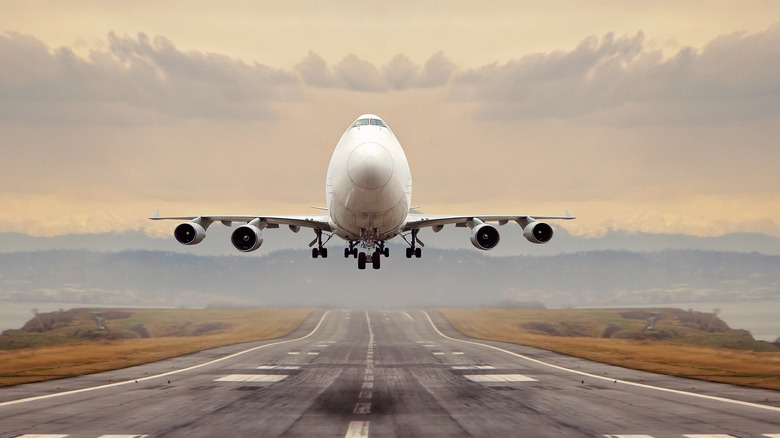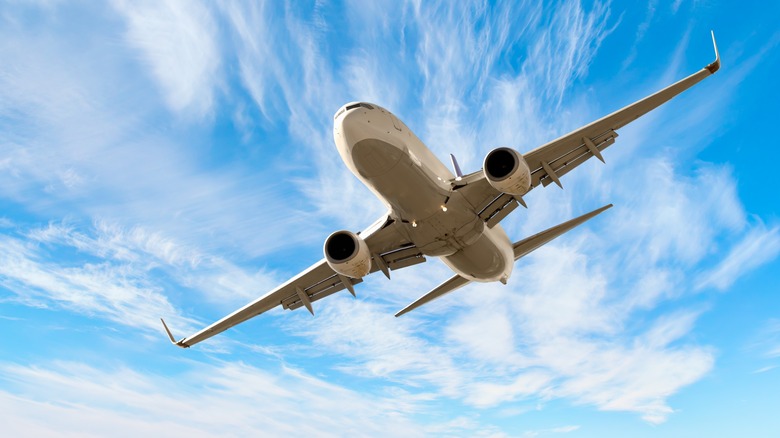Why Most Airplanes Are White
Although the Wright brothers undertook the first flight in 1903, commercial flying did not become the norm until the 1920s and 30s. Most planes in early aviation history were polished but left unpainted. This, of course, is no longer the case. Airlines are easily distinguished through their color schemes and logos, known as liveries. For example, Virgin Atlantic's vertical stabilizer, rudder, and engines are painted red. On the other hand, Delta combines blue and red for its colors. But during manufacturing, planes are first painted green with zinc chromate to prevent corrosion.
This is applied long before the plane gets painted its official colors. Once it's time to start the paint job, it can take up to two weeks to complete. However, most major airlines have something in common: Regardless of the company, they will primarily paint the exterior of their planes white. This pattern also applies to private planes. This is not a coincidence or a style statement. From safety to sensibility and economics, there are various reasons why you don't commonly see a fleet of bright- or dark-colored airplanes on the runway.
White plane equals lower temperatures
It goes without saying that airplanes are exposed to sunlight. Airlines paint their planes white to combat high temperatures inside the plane and reduce heat and UV absorption. In a 2017 interview with Business Insider, R. John Hansman, an aeronautics professor from MIT, explained this concept further, saying, "It's basically the same as putting sunblock on. For example, on a sunny day, if you're wearing a dark-colored shirt, you'll heat up more than you will if you're wearing a white-colored shirt."
Simply put, white paint successfully reflects the sun. Moreover, Hansman told Business Insider that white paint shields the plane's fragile materials from the sun — planes painted darker colors can overheat.
In 2022, former President Donald Trump's livery design for Air Force One was partly abandoned due to overheating concerns. Trump wanted the bottom of the plane to be painted dark blue and red. In 1996, Air France presented a Concorde aircraft painted in Pepsi's signature colors, red, white, and blue. However, this also meant the plane was susceptible to overheating and significantly diminished its capacity for speed and safety.
It's cheaper to paint planes white
Everyone wants to save a buck. Yes, including airlines, and with good reason — painting planes does not come cheap. In fact, a plane's paint job could cost anywhere from $175,000 to $200,000. The paint itself is pricy due to its unique formulation, which includes polyurethane and other materials. However, white paint is said to be less expensive and longer lasting than other colors. According to private jet service Aero Affaires, white planes only have to be repainted every four years, compared to two years for planes painted in darker colors (due to tarnishing).
Thus, if the plane is white, less money will be spent on future paint jobs. In addition, there will be a smaller revenue loss when the plane can't be used due to the repainting process. Another thing to note: A white plane has a higher resell value than a plane painted another color. Again, this has to do with the cost of paint. Airlines don't want to spend thousands on a plane only to have to spend thousands more to change the color, especially if they choose to lease an aircraft.
Likewise, white private planes are more likely to be chartered than non-white planes. The weight of the paint is also a factor. Colored paint is thicker and heavier. White paint, on the other hand, doesn't weigh as much, and the less weight a plane carries, the less fuel it will use.
White paint is safer
Flying is rarely dangerous, but birds can strike plane engines anytime — in 2019, there were more than 40 bird strikes every day! Bird strikes (and other wildlife) cause over $900 million in airplane damage a year. In some cases, bird strikes can be so severe that the plane has to make an emergency landing in water, as with the 2009 Miracle on the Hudson incident. Believe it or not, white paint is used as a deterrent. The belief is that birds and other animals will see the white paint better than the darker paint, which will cause fewer accidents.
If a bird strike or any other type of structural damage occurs, white paint makes it easier to find and fix — even if it's the whole plane. Let's say the worst possible scenario happens, and a plane goes down. Former flight attendant Philip Weiss told Reader's Digest that white paint holds significance. He explained, "White reflects the sun, so it will appear brighter and will be easily spotted in the unfortunate event of an accident." Even if it's nighttime, a white plane can be seen in the dark much better than a plane painted a darker hue. In the grand scheme, a white plane pays off in more ways than one.



